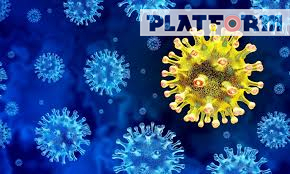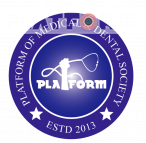11 June, 2025, Tuesday
We all knew about the COVID-19 which was pandemic in 2020 and 2021. It was one of the greatest pandemic we ever had. It was frightened that people were dying in this virus and had no scientific treatment. Due to this virus, we had lockdown the whole world. We thought that COVID 19 may be eradicated but it happened as new variant surface into this world. It was happened in May 2025. After 5 years, this COVID 19 is now emerged as “NB.1.8.1”. It is also called SARS-COV 2 and Omicron XBB. We will learn about this new variant with short details.

Introduction
NB.1.8.1 is the latest variants of COVID-19. A slightly upgraded version of L.P.8. NB.1.8.1 has been linked to significant increases in COVID-19 cases across several countries. According to the WHO, as of May 18, 2025, the NB.1.8.1 variant has been identified in 22 countries, accounting for 10.7% of global SARS-CoV-2 sequences submitted to the Global Initiative on Sharing All Influenza Data (GISAID) during epidemiological week 17 (April 21–27, 2025). This marks a significant increase from 2.5% four weeks prior.
The Nature of Viral Variants
Viruses mutate over time, and SARS-CoV-2 is no exception. As the virus replicates, small changes occur in its genetic code. Most mutations have little to no impact, but some can alter the virus’s behavior. When a group of mutations results in changes that affect how the virus spreads, causes illness, or evades immunity, that version of the virus is classified as a “variant of concern” or a “variant under monitoring” by health authorities like the World Health Organization (WHO).
Sign & Symptoms
The sign & symptoms are similar to COVID-19 but there is a bit difference. So, the sign & symptoms are:
Low-grade fever or chills
Mild sore throat or throat irritation
Runny or blocked nose
Dry cough that lingers
Fatigue and mild headache
Gastro symptoms like nausea, appetite loss, or diarrhea
Muscle aches and body pain
Diagnosis & Treatment
PCR and rapid antigen tests continue to detect the new variant, although sensitivity might vary slightly. It’s important to test early, especially if symptoms arise after exposure or travel.
Antiviral treatments such as Paxlovid, Remdesivir, and Molnupiravir remain effective for most individuals, especially when administered within the first few days of symptom onset. However, drug resistance is always a possibility with viral evolution, so ongoing monitoring is essential.
Public Health Measures
While much of the world has moved on from strict lockdowns, the emergence of a new variant reminds us of the importance of adaptable public health strategies. Authorities in various countries are reinstating or recommending the following measures:
Masking: Use of masks in crowded indoor spaces, public transport, and healthcare settings is once again being encouraged, especially during case surges.
Testing and Isolation: Testing after symptom onset or known exposure remains crucial. Individuals testing positive should self-isolate to reduce further spread.
Ventilation: Improving air circulation in indoor environments — including classrooms, offices, and public spaces — is a long-term mitigation strategy.
Surveillance: Genomic sequencing and wastewater monitoring are being ramped up to track the spread and mutations of the new variant.
Looking Ahead
The emergence of this new variant serves as a reminder that COVID-19 has not gone away. However, it also highlights how much progress we’ve made. Vaccines, treatments, and global surveillance systems are far more advanced than they were in 2020. Our ability to respond quickly and effectively to new variants is stronger than ever.
The virus will likely continue to mutate, and new variants will emerge from time to time. But with science, cooperation, and continued caution, we can prevent widespread disruption and protect the most vulnerable among us.
Final Thoughts
While the new COVID-19 variant presents fresh challenges, it is not cause for panic. Instead, it is a call for renewed vigilance, informed decision-making, and collective responsibility. The pandemic has taught the world invaluable lessons — about preparedness, equity, and the importance of acting based on science.
By staying informed and adapting our behavior, we can live safely in a world where COVID-19 continues to evolve — not as a global emergency, but as a managed and understood part of our public health landscape.
Platform Reporter: S. M. M. MUSABBIR UDDIN
